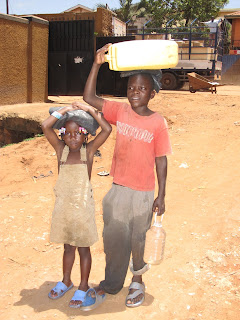The crops are cultivated for home use and for extra income. The livestock has a great value for money so they are mainly sold in the markets. This way the families have better food security when the incomes are unstable. The food prices are problem in the whole country. Last years drought combined with the rising oil prices have driven many families in to problems, poverty and hunger. The latest instabilities in the country originate from the nations dissatisfaction of the governments actions solving these problems that affect tens of millions Ugandans daily life’s. Of course the opposition have not been quiet in this topic either.
Pamoja Cleantech is a start-up enabling tech transfer for clean energy technologies in East Africa to excite social-economic development and climate change mitigation. During this spring Irena (Aalto University , Finland) and John, Federico, Goncal and Melih (KTH, Sweden) will spend few months in Uganda doing research related to their masters thesis made together with Pamoja Cleantech.
tiistai 26. huhtikuuta 2011
Urban Agriculture
sunnuntai 24. huhtikuuta 2011
Mount Kenya
I felt really lucky having the possibility to experience Mt. Kenya and the national park. What made the hike even more interesting were the different vegetation zones in different altitudes and opposite sides of the mountain. But nothing was as breathtaking as the last 20 minutes of climbing and reaching to the summit while the sun was rising. And finally, you reach the top! Breathtaking!
After the euphoric feeling vanished, I realized that how privileged we really are. Mount Kenya and the surrounding national park are the wonders and richness of Kenya, but who are the people that can afford to experience that? Entering the national park was 50€ per hay for foregners and 27€ for residents. During the whole trip, we saw one Kenyan group and all the others (excluding the guides etc.) were foreigners.
-Irena





Kenya 6-17.4
Travelling in East-Africa can be affordable if you do it the local way – by bus. Compared to flying which is around 150 dollars, I paid about 25€ . I took a night bus from Kampala to Nairobi. I must admit that I felt a bit suspicious about travelling by my self during the night, but the ride was great and crazy. I had the front row seat and was able to experience the driving culture from the driver’s perspective. The way different vehicles communicate with each other by winking head lights and blinkers. What a light show. And a lot of exciting moments (and at moments horrifying moments) While the bus was bypassing cars and lorries. After 12 hours I arrived in Nairobi.
-Irena
torstai 14. huhtikuuta 2011
maanantai 4. huhtikuuta 2011
Game time!
These game´s are made by an UN-worker at his own workshop. He used only renewable materials and the game´s are a combination of traditional local and universally known games.
The 4 R´s of sustainability : reduce, reuse, recycle, renewable
You´d be supprised to know how much straws they use for drinks here! This wonderful lady, Benedicta is the director of Kinawataka Womens Initiatives. This women’s group uses recycled straws for making jewellery, shoes, bags and accessories such as belts. You can find more of her designs at http://www.kwiuganda.org/
I also visited a work shop where they used second hand barrels for village computer frames.
The traditioal charoal cookstoves are sold everywhere. These guys used used gas cans for producing the stoves.
Namuwongo Women´s group

I was honoured to visit Namuwongo women’s group´s workshop. William has helped these ladies from the very beginning of this group so he took me and my friend Sara to the Namuwongo slum, where these amazing women live, brought up their kids and have their business. Sofia, the manager of the women’s group told us the touching story behind. This slum area was established more than 10 years ago. During the wars in Uganda and in the neighbouring countries many families had to resettle away from their homes. These families were resettled in Kampala and they still live in the same spot, which was not supposed to be a permanent place for them. After more than 10 years, they still live there and the government have no plans to provide decent homes for these families.
Life was really hard for these women and they really struggled in order to afford normal items such as soap, or even food, not to mention paying school fees for their kids. Sofia, originally from Kenya came up with the idea of making jewellery, since the handicraft culture for jewelleries is strong in Kenya. Where there’s a will, there’s a way. At first Sofia didn´t know how and what material to use. But another lady from the slum knew how to make jewellery out of recycled paper. The women out their ideas together and nowadays Namuwongo women’s group is improving life’s of 36 women and their families, so more than 150 peoples life are improved through this.


The jewelleries are made by cutting the recycled paper in a long triangle shape. The paper is rolled around in to a shape of a bean, and finished up with glue and refining chemical. No dies are needed, the colour of the paper determines the colour of the bean.
If you would like to get some of these these beatiful items, let me know.






























